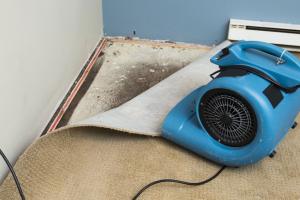A Comprehensive Guide to Finding and Removing Carpet Mold Effectively

-
Quick Links:
- Introduction
- Understanding Carpet Mold
- Identifying Carpet Mold
- Removing Carpet Mold
- Preventing Carpet Mold
- Case Studies
- Expert Insights
- FAQs
Introduction
Carpet mold is a hidden threat that lurks in many homes, often going unnoticed until it has caused significant damage or health issues. Understanding how to find and remove carpet mold is essential for maintaining a healthy living environment. This comprehensive guide offers insights, techniques, and strategies that anyone can utilize to tackle carpet mold effectively and prevent its return.
Understanding Carpet Mold
Mold is a type of fungus that thrives in damp environments. It reproduces through spores that can easily become airborne, leading to health issues when inhaled. Carpets can become a breeding ground for mold due to factors such as high humidity, water leaks, or improper cleaning.
Health Risks Associated with Mold
Exposure to mold can cause a variety of health problems, including:
- Respiratory issues
- Allergic reactions
- Skin irritations
- Sinus congestion
- Headaches
Identifying Carpet Mold
Identifying carpet mold early can prevent further damage and health risks. Look for the following signs:
Visual Signs
Check your carpets for:
- Dark spots or stains
- Unpleasant odors
- Visible mold growth
Environmental Indicators
Monitor your home for conditions conducive to mold growth:
- High humidity levels (above 60%)
- Water leaks or spills
- Poor ventilation
Testing for Mold
If you suspect mold but cannot see it, consider using a mold testing kit or hiring professionals for accurate results.
Removing Carpet Mold
Once identified, it is crucial to remove carpet mold promptly to minimize health risks and property damage. Here’s a step-by-step guide to effectively remove mold from carpets:
Step-by-Step Guide
- Gather Necessary Supplies: You'll need gloves, a mask, a scrub brush, vinegar, hydrogen peroxide, and a vacuum cleaner with a HEPA filter.
- Isolate the Area: Prevent mold spores from spreading by sealing off the area.
- Vacuum the Carpet: Use a HEPA vacuum to remove spores from the surface.
- Apply Cleaning Solution: Mix equal parts vinegar and water or use hydrogen peroxide. Apply it to the affected area.
- Scrub the Area: Use a scrub brush to work the solution into the carpet fibers.
- Rinse and Dry: Rinse the area with clean water and blot it dry. Ensure the carpet is completely dried to prevent regrowth.
- Monitor the Area: Keep an eye on the area for any signs of mold returning.
Preventing Carpet Mold
Prevention is the best strategy for mold control. Here are some actionable tips to keep your carpets mold-free:
- Maintain indoor humidity levels below 60%.
- Ensure proper ventilation in high-moisture areas.
- Address leaks and spills immediately.
- Regularly clean and maintain carpets.
- Consider using dehumidifiers in damp areas.
Case Studies
In a recent survey conducted by the Environmental Protection Agency (EPA), it was found that 1 in 4 homes have mold issues, with carpets being the most affected area. Here are two case studies highlighting the importance of addressing carpet mold:
Case Study 1: Family with Asthma
A family struggling with asthma noticed an increase in symptoms. Upon inspection, mold was found in their bedroom carpet, leading to a thorough cleaning process that improved their health drastically.
Case Study 2: Water Damage Recovery
A homeowner faced extensive mold growth after a pipe burst. By following the removal guidelines and investing in professional help, the homeowner restored the carpet and improved indoor air quality.
Expert Insights
We spoke with mold remediation specialists who emphasized the importance of timely action. “The longer you wait, the worse it gets,” says Dr. Jane Doe, a certified mold inspector. “Regular maintenance and quick responses to water issues can save homeowners a lot of trouble.”
FAQs
1. What causes carpet mold?
Carpet mold is primarily caused by excess moisture, such as spills, leaks, or high humidity.
2. How can I tell if my carpet has mold?
Look for visible stains, musty odors, or increased allergy symptoms.
3. Is it safe to remove mold myself?
If the infestation is minor, it can often be managed at home, but larger infestations may require professional help.
4. Can mold in carpet make you sick?
Yes, mold can cause respiratory issues, allergies, and other health problems.
5. How can I prevent mold from growing in my carpet?
Maintain low humidity, ensure proper ventilation, and clean spills immediately.
6. What cleaning solutions are effective against carpet mold?
Vinegar, hydrogen peroxide, and commercial mold removers are effective against carpet mold.
7. How long does it take to remove mold from a carpet?
The time varies; minor cases can be resolved in a few hours, while extensive infestations may take days.
8. Should I throw away a moldy carpet?
If the mold is extensive and cannot be removed, replacement might be necessary to ensure safety.
9. Can I use bleach on carpet mold?
Bleach is not recommended for carpets as it can damage the fibers and may not effectively kill mold.
10. How can I test for mold in my carpet?
Home testing kits are available, or you can hire a professional inspector for thorough analysis.
Conclusion
Finding and removing carpet mold is essential for protecting your home and health. By understanding the causes, identifying signs, and implementing removal and prevention strategies, you can create a safer living environment. Remember, proactive measures are crucial in maintaining a mold-free home.